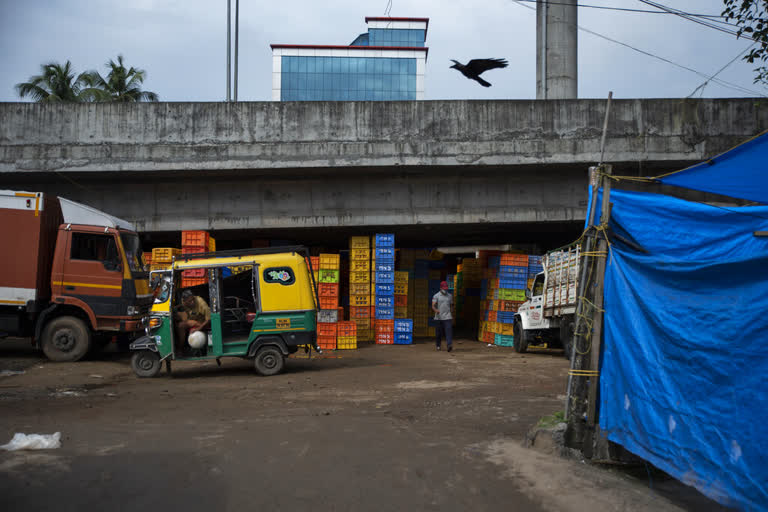New Delhi: The wholesale price-based inflation eased to a six-month low of 10.66 per cent in September, helped by moderating food prices even as crude petroleum witnessed a spike.
WPI inflation has remained in the double-digit for the sixth consecutive month beginning April, and a lower rate of inflation was recorded in March at 7.89 per cent. The high rate of inflation in September 2021 is primarily due to rise in prices of mineral oils, basic metals, non-food articles, food products, crude petroleum & natural gas, chemicals and chemical products etc. as compared to the corresponding month of the previous year, the Commerce and Industry Ministry said in a statement.
Inflation in August was 11.39 per cent, while in September 2020, it was 1.32 per cent. Inflation in food articles eased for the fifth straight month, recording (-) 4.69 per cent in September, against (-) 1.29 per cent in August, helped by easing vegetable prices. Spike in prices continued in pulses and egg, meat & fish at 9.42 per cent and 5.18 per cent, respectively.
Inflation in vegetables was (-) 32.45 per cent, with onion at (-) 1.91 per cent and potato at (-) 48.95 per cent. Fuel and power basket witnessed a 24.91 per cent inflation in September, against 26.09 per cent in the previous month. In crude petroleum and natural gas, it was 43.92 per cent, against 40.03 per cent in the previous month.
In manufactured products, inflation stood at 11.41 per cent. Icra Chief Economist Aditi Nayar said the sequential decline in the WPI inflation in September 2021 relative to August 2021 benefitted from primary food items slipping into a deeper disinflation of 4.7 per cent, and a base-effect led to easing in the inflation for fuel and power.
However, the inflation for the other categories either hardened or remained unchanged in September 2021, with a renewed surge in the global prices of many commodities. "After four months of consecutive moderation, we expect the WPI inflation to rise in October 2021 and remain in double-digits in Q3 FY2022. While a favourable base will moderate the WPI inflation during Q4 FY2022, it is nonetheless likely to average around 10 per cent in FY2022," Nayar said.
The MPC members are unlikely to choose to sacrifice growth at a time when inflation is being driven up by global supply-side issues. We remain convinced that monetary policy normalisation will commence only after demand-side pressures start dominating inflation, she added.
The RBI, which mainly takes into account retail inflation, in its monetary policy last week kept interest rates unchanged at record lows. Data released earlier this week showed retail inflation slowed to a five-month low of 4.4 per cent in September on moderating food prices. Suman Chowdhury of Acuite Ratings & Research said the gap between CPI and WPI inflation indicates that the current inflationary risks are primarily emerging from the impact of commodity prices on the manufacturing sector, where further pass-through is likely as demand continues to improve.
Although the food category may continue to provide relief in the near term, such transmission of production costs may keep core inflation at elevated levels. WPI core inflation has continued to be firm amidst an increase in input prices, he said. "While we believe that the peak in the headline wholesale inflation is behind us, continuing supply-side bottlenecks, raw material shortages and high commodity prices are likely to maintain the core inflation at such high levels, Chowdhury added.
Also read: Festive season fails to lift factory output above pre-Covid level



